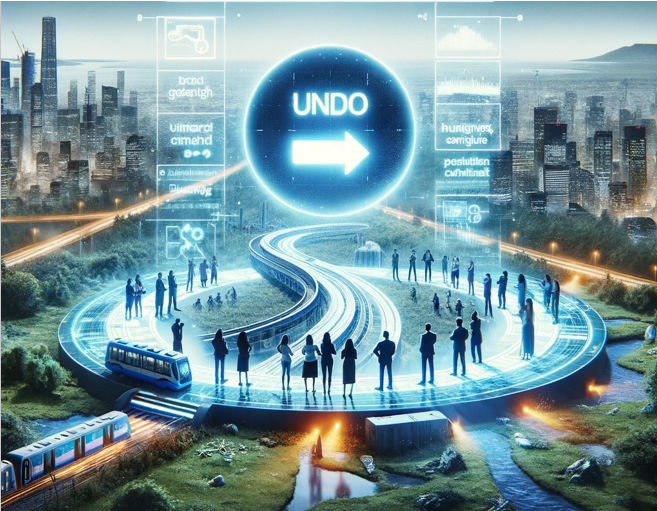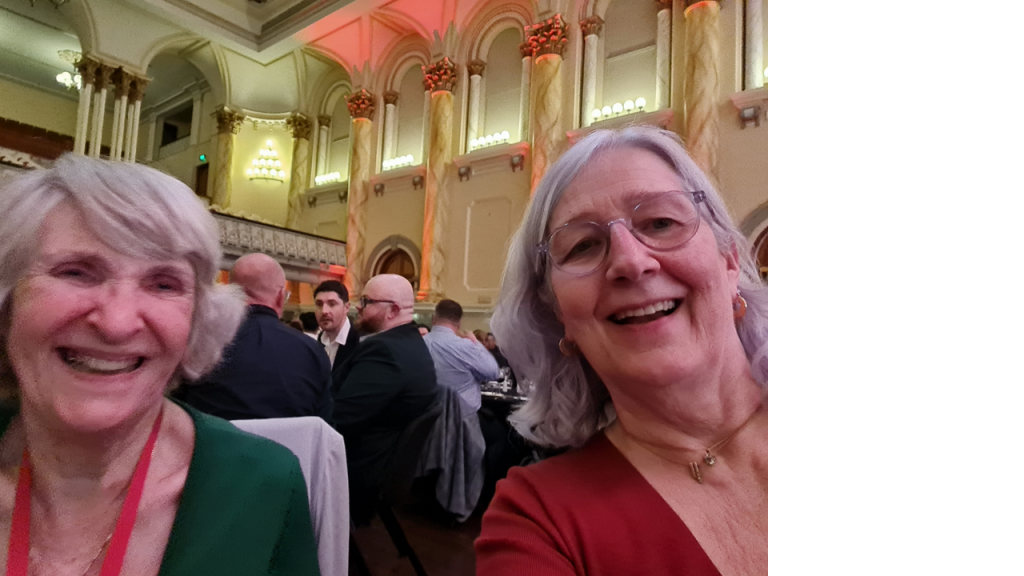
Now that we have a great many courses and various trainings in asset management it is tempting to say that all asset managers should be ‘qualified’. But thinking about this I reflected on my own experience, starting from nothing, and I also remembered an interesting dinner one night when a colleague reported that his daughter had an ambition to be an asset manager like him.
“You can only do what I do, if you do what I did” replied her father, explaining that his daughter would need to do an engineering degree and further study as he had done.
“Is that really true?” asked his wife, who had home-schooled their extremely bright children. “Could she not learn by observation and questioning and work her way up from simple to more complex tasks? That is the way she has learnt everything else!”
You and me and, indeed, many asset managers have learnt much of their asset management this way. It is only within the last ten or fifteen years that we have started to teach the processes and techniques of asset management – in seminars, workshops, and in formal education.
Some of you would have a graduate degree in engineering, others would have come up through a background of construction, maintenance, finance, or property development/ management and may, or may not, have formal tertiary qualifications.
A couple of the best asset managers I have known had qualifications — but in nursing! One became Director of Capital Works in a Health Commission, the other an extremely practical policy director in the Commonwealth Government. They really understood the concept of service.
Or consider the Asset Manager I lunched with, who designed and published much sought after practical guidelines in asset management, decision making and life cycle costing, all without the background of a formal degree – just an inquiring mind, the interest to read widely, and the wit to apply what he read. He was, moreover, able to teach these techniques to others who also had no formal training and to design policy that encouraged their use. Now that IS an Asset Manager!
When we consider the number of excellent engineers we know, great at ‘doing’ things, but with little real interest in decision-making, then we would have to conclude that an engineering background may be useful but it is neither necessary nor sufficient.
“But surely we have to have properly qualified people?” Sure, but how do you qualify people to look for better ways to do what has always been done, indeed, better ways to do what they, themselves, have been taught to do? Qualifications and ability are not synonymous. We need to be more flexible and mandating certain qualifications or training will only hinder flexibility.
So yes, keep learning, get qualifications, but in a fast changing world, no set of qualifications can be allowed to be a stopping place. Or to stop us

In 2004 (Feb 14, The Buzz) ABC’s Radio National broadcast an interesting interview with an American post graduate student whose research work caused major security concerns, so much so that Richard Clarke, former White House cyberterrorism chief, declared that it should be burnt!
What did the student do to create such antagonism at security levels?
Critical Infrastructure Database
His thesis was on critical infrastructure in the United States, with a focus on information infrastructure. As part of his work in analysing the infrastructure and its vulnerabilities as preparation for determining a set of tools to deal with the vulnerabilities, the student put together an integrated database. The dataset consisted of a large collection of geo-spatial data on where the fibre optic lines were in the country, both long-haul lines that connect cities up, the metropolitan area networks within cities, switching centres and data warehouses that house and direct traffic on the network. The data carried on theses lines included a wide variety of critical sectors in the US economy and global economy including financial transactions, military command and control, emergency response, telephone calls, government communications. “Pretty much everything runs over fibre except for satellite transmissions” he said.
He worked quietly away at his research for a number of years – and by the way all of the data in his database was gathered from the public domain! – until the Washington Post wrote an article about his work, and then things started to get a little heated. Top security people then spoke with his university and wanted to know what security precautions were being taken with the database. The University asked government agencies what security precautions would be taken within their domain and then tried to replicate as best as they could within the university.
Safeguarding the Database.
This is what they did: The graduate explained “The computers that the data is housed on are not connected to any network and are in a secure room behind cipher locks. We have a vault that we take the removeable hard drives to and put them in there for storage.. and things along those lines.”
Integration
What I found interesting about this story is that as long as the data was available in a distributed form, on individual websites all over the country, there was no great hue and cry. Admittedly the student started his research in 1996, which pre-dated Sep 11.
However, the general lesson remains – integrated databases are more valuable because they allow us to do things that distributed databases don’t. In the student’s case it made it possible to analyse national vulnerabilities.
But the very act of integration introduced the biggest vulnerability of all!

Just over 10 years ago Dr Linda Newton (Canada) joined Ruth Wallsgrove, Chris Lloyd, Charles Nelson (England) and myself (Australia) in London in considering the different ways in which AM might develop. The work was then written up in Strategic Asset Management. We were only looking at developed countries then so I thought it worthwhile in asking Linda, who has now had seven years experience in applying the UN Asset Management work in developing countries what has particularly stood out for her.
Musings from Seven Years of Promoting AM in Developing Countries
By Linda Newton, PhD
I have been working with the United Nations Department of Economic and Social Affairs (UNDESA) for just over seven years now. During this time, we’ve worked with local governments in least developed countries (LDCs) to build their asset management awareness and capacity by delivering workshops based our published handbook Managing Infrastructure Asset for Sustainable Development.
If asked to provide two key takeaways from the workshops, it would be this:
- ‘Strategic’ is simply a point in the future.
- Asset management is best understood when its personalised.
How often do we see the words ‘strategic’, ‘tactical’ and ‘operational’ associated with a specific time frame? For example, many strategic plans cover 3-5 years. Now think about an individual. What does strategic mean to them? It all depends on their personal point of view. For instance, for some individuals, ‘strategic’ could be measured months, ‘tactical’ in weeks, and ‘operational’ in days, or even hours. Which brings me to the second takeaway.
I used to start the workshop by jumping right into asset management definitions and principles. For many, it was a lot of theory with no practical grounding. And then I had an idea – let’s start with personal assets. Almost everyone has, or has had, a bicycle. What comes next – a motorbike and later, perhaps a car? Different assets, delivering the same service (transportation) but at different levels and different costs. What if I used this to explain asset management? And so, ‘What I Can Learn from my Motorbike’ became the focus of the introduction to AM.
These takeaways are not unique to LDCs. Understanding an individual’s perspective and using personal examples helps position strategic asset management in terms that are understood. So, I invite you to take a look at your own organisation. Are people struggling to understand AM? If so, make it personal!

What makes an effective asset management practitioner? Ruth Wallsgrove ,who founded IAM’s Asset Magazine in 2004, recently contributed this opinion piece to the magazine in which she shared some of her experience in working around the globe. Our thanks to IAM for permitting reproduction here.
On the steering group to review the IAM Competences Framework, we discussed the distinction between the things we needed to know about and things we actually have to be able to do for ourselves. That is between what we need to appreciate other people doing, and what we have to take main responsibility for.
A useful way I have found to think about asset management capabilities generally is: what won’t get done if we don’t do it? What key competences should we expect not to be there, if we don’t have them?
This means areas such as IT, Engineering and Finance are fields we should understand, but we don’t necessarily need to have hands-on skills or previous experience in them. There are plenty of other people, other professionals, looking after them.
On the other hand, we have to be the ones to understand good asset management practice, and to communicate this and its benefit across our organisations. Who else could do this? Communication, facilitation and change management of attitudes are often called ‘soft’ skills, but that doesn’t reflect how hard many of us find them in practice.
Information and risk
I have become increasingly interested in in two other areas vital for effective asset management that we cannot depend on anyone else to know how to do. They probably are not there anywhere else in our organisations, especially as applied to physical assets. And they are not in any sense ‘soft’.
First of all, we need to ensure we have the skills to understand what information about our assets can and cannot tell us. This isn’t about IT, data collection or even quality assurance, but about interpreting data. The realm of data science, including statistics, is crucial here. Some of the best asset managers I’ve worked with have exceptional data-analysis skills – some even teach data science at college or have backgrounds in military intelligence. Once you’ve seen a true expert in action, it’s clear that asset management is incomplete without these skills. (It’s a shame that many of us didn’t enjoy statistics in college!)
A second, related area of concern is risk management. The whole realm of managing physical assets has up to now been – well, how can I put this delicately – naive about risk. We still struggle to quantify risk, as if actuaries didn’t exist. The basic issue may not just be that we have been ignorant (and I am talking about myself here), but that we’ve been positively resistant to handling uncertainty.
Embracing uncertainty
Twenty years ago, Ype Wijnia from ProGas in the Netherlands alerted our community to the problem of relying on people who don’t like to work with uncertainty On those whose previous education, and maybe natural preference, leans towards knowing for sure, or relying on rules to give the right answer.
But that just isn’t asset management, it’s all about making decisions and planning for the future. The one thing you can be sure about is that you don’t know everything. You can’t know everything.
We have to ‘embrace uncertainty’, as Chris Lloyd, who previously chaired the IAM work on competences, put it – and use the tools and concepts for managing risk that have been there for years in other professions.
Looking across these key competences, i suspect we’ve relied too much on the skills that individuals bring across from engineering or finance. We’ve lingered too log in our old comfort zones. We should not expect that what we have learnt from previous education and experience is adequate on its own.
We should expect any asset manager to go on learning and exploring areas that may be quite different to what we’ve done before. New tools, new concepts, jumping happily into the unknown.
Curiosity may well be the most important asset management competence of all.

In the art world, knowing the provenance, or the ownership history, of a piece of art, is critical to establishing its veracity and value. The same should be true of any ‘fact’ that you wish to use to support an argument in asset management. We speak of ‘evidence-based’ decision making, but how valid or reliable is our ‘evidence’? In other words, how do facts become facts? As you think about this, consider the following:
I had been asked to review a paper about disability access and the author was keen to get my comment. As I read it, I noted his use of substantial and very favourable benefit-cost figures. Knowing how difficult it is even to conceptualise some of the benefits, let alone measure them, and finding no explanation of the figures in his paper, I ask him for the source.
“Oh, never mind that”, he airily replied, “what do you think of the paper overall?
I told him that I wouldn’t be able venture an opinion until I understood the data and, after a fair amount of applied pressure on my part, he eventually said:
“Look, I made them up! But it doesn’t matter because I am giving this paper at an international conference and someone will quote me, and then someone will quote that person – and pretty soon, it will be fact!” Unfortunately, this is a true story and he may not the only one acting in this manner.
Much of the time, however, mis-representation is not as blatant as this. It can be simply a matter of not paying enough attention to labelling the axes. Often we slap up a graph without identifying the axes and expect the audience to fill in the gaps from the context of the conversation. This is a lazy habit that is responsible for many subsequent misunderstandings. For example, what we think is a trend line showing full life cycle costs, might simply be a trend of operating costs. With very different implications!
What other examples do you have where presentations or papers, have or can be, misinterpreted with ill effects on Asset Management?

Ten years ago, after 20 years, I brought SAM to a close. I asked past contributors what the key issues then were, and what we – as asset managers – should do. What did they say – and what would you say today?
Here is that issue, SAM 400. What are your favourites? Top of the list for me was Melinda Hodkiewizc, Professor of Engineering at the University of Western Australia, who bluntly stated it was time to ante up and provide evidence to support our claims for asset management. I could not agree more, but have we done it?
Several referred to the need to make things simpler – both in terms of action and communication and Peter Way, then Chairman of the IPWEA, while recognising the difficulty, spoke of the critical need for asset managers to speak out whenever they see their political masters moving in a questionable direction. If only! After all, if we who know don’t do it, who can?
Many recognised the importance of the quality of our people in AM and the need for us to continue to think and to develop our abiliies, not mindlessly react. The ever practical Ashay Prabhu, implored us to ‘stop measuring the gap and start plugging it’.
While most focused on developed countries, Jo Parker, the only engineer I know who has had to build a bridge under duress with limited resources – whilst wearing a burka! – argued that “To spread AM to developing countries, first understand their world!” Is it ignorance or arrogance that drives so many ‘advisors’ from developed countries to assume what works for us will work everywhere?
What were the key issues then? Alan Butler, then Director of the Australian Center of Value Management, now retired, identified the following:
- depletion of core skills and the resultant dumbing down of the asset portfolio “clients” who need to be responsible for effective briefing and critical review of solutions being delivered on their behalf – the asset client must remain an informed client;
- the politicising of the public service where whole agencies are wrapped up in the short term priorities of the incumbent colour of government at the expense of strategic, portfolio-wide context – impartial advice, without fear or favour must exist;
- changing the procurement models that place specialist consultants in a position of technical influence where smaller solutions or non-build solutions are not in their commercial interest to present to the engaging “client” – no matter whether the arrangement is called an Alliance, Strategic partnership, Design & Construct, the “non-asset” or smaller solution must always be sought and tabled for real consideration;
- not understanding what “value for money” means for each client – these words are written everywhere including White Papers, policy, business cases and project briefs with very little understanding or ability to explain, measure or demonstrate what levels are sought and achieved – We have the tools and institutions to address this.
I think that this was a pretty good list for the time. What are the most critical issues we should now address? Thoughts?

Me at my favourite coffee shop
Most mornings I have coffee in my favourite coffee shop and have a chat with George, the barrista. I like George and I want his coffee shop to remain viable – difficult in these times of rising prices – so, in addition to the pleasure of the coffee itself, I get satisfaction from knowing that I am contributing in a small way to his continuing income. I could have spent my $6 in another coffee shop or not on coffee at all and then those dollars would contribute to someone else’s income and job sustainability so I know that my expenditure is not increasing the number of jobs in total, I am simply impacting (admittedly in a very small way) where the jobs are being created or preserved.
But let us consider this same type of transaction – purchasing something for money – on a far larger scale. The government decides to build more infrastructure, say for a billion dollars, and it justifies that expenditure on the grounds that it is ‘creating thousands of jobs’. Let us set aside for a moment that the number of jobs is usually greatly exaggerated, never validated, and many of them may last only a few weeks or months. The real question is: are these jobs ‘additional jobs’, which is the way we are expected to view it and generally do, or have we simply changed the type and location of the jobs?
The government could have spent that one billion on community services (doctors, nurses, teachers, police etc or, indeed – if infrastructure is so important – on the maintenance of existing infrastructure ), or it could have left it in your pay packet instead of raising taxes to fund its infrastructure spend, but it chose to spend it on bricks and mortar. We like the idea of ‘more’ jobs being provided. We are less thrilled about the idea of jobs being lost. Fortunately for our peace of mind we do not see the jobs that are lost and although we do experience the lack of services that results we do not necessarily associate the two. So let us look at a typical project.
In December 1985 when the Adelaide Casino was established by the state owned Lotteries Commission, there was much hype about how many jobs would be ‘created’ by the Casino. And indeed, for the first six months, there was great excitement about this novelty. People flocked to it, abandoning their usual venues. It was the first Casino in the state and many went there to drink or eat, and some to gamble and the Casino employed many. After a while, however, the novelty wore off, fewer people went and the number of service people employed by the Casino declined. Customers sought to return to their previous venues but some of these, having to cope with reduced incomes in the interim but still pay high city rental prices had gone broke and moved out. Trouble was, in calculating the increase in jobs, no attention had been paid to where the new Casino customers were coming from or how long they would remain customers. The lovely little coffee shop I frequented in the city, which provided chess sets and boards for its customers, was sadly one of those that went out of business.
The moral of this story is when thousands of new job are vaunted, stop, look closer.

My team makes use of premortem thinking: as part of planning action, immediate or long term, consider how it might go wrong. We think ourselves into the future looking back at a project (or a meeting). Humans are surprisingly good at this time-travelling.
For me, this is part of a principle Asset Managers should embrace: the principle of reversibility. It’s not just about understanding the consequences of our decisions, but also about planning for the ability to undo or reverse their effects if needed. Sure, you can’t un-ring a bell, but we can find ways to get as close as possible to the pre-action state and minimize the impact if we think about it right from the start.
Do our plans have exit strategies or an undo button? None that I have seen, why not?
This is especially crucial in infrastructure projects, where large investments and long lifespans magnify the potential impacts. How would they be delivered differently if that was required? Would that requirement cause us to better maintain the infrastructure we currently have? I think so.
Let’s face the hard questions: Can we put rare earth metals back in the ground? Can we undo the energy consumed in building something new?
By embracing the principle in Asset Management and infrastructure decision-making, we can strive for resilient and adaptive systems that serve the present while safeguarding the future of generations to come. We navigate challenges with eyes wide open.
We ask tough questions, anticipate consequences, and face the answers with truth – and then we create our plans and strategies.

In case you haven’t caught up with it yet, ALGA’s ‘2024 National State of the Assets Report: future proofing our communities’ was released a week ago. You can download a copy of the Summary and Technical reports here:
Sometimes reviewing a report is a chore. This was a pleasure. It ticked all the boxes: it was very readable; honed in on the important issues and provided useful, verified data. It would be impossible for anyone to read this report and not gain a great appreciation for the pressures being faced by all councils, but especially smaller and regional councils, as they face the combined effect of asset ageing, climate change, increasing consumer expectations and more stringent regulations – and very little access to funding.
My overwhelming reaction, and it may be yours too, was to realise that better asset management is unlikely, by itself, to be sufficient. And this may be the most important take away. Asset Management is often presented as a panacea, it is not – but it is where we must start, for if we cannot manage effectively what we already have, how can we ask for more?
The good news is that this ALGA report indicates improvements are being made. How we express data has a major effect on how it is received. I particularly appreciated having infrastructure costs expressed per ratepayer. There was a time when we felt that large aggegate numbers had more impact and everybody tried to make their future costs as big as possible ‘to be impressive’, but expressing costs on a small personal scale, i.e. per ratepayer, enables greater understanding. We are more able to feel it. I also like the way that averages were dealt with. When I started work on life cycle renewal costs, realising that averages concealed more than they revealed, I put a lot of effort into calculating full age distributions. But ALGA has realised we don’t need to do all that work if we supplement the average with an indication of the extent of the most urgent of renewals. Very sensible. Indeed the entire report is very sensible. There is a lot of data, but it is carefully designed not to overwhelm.
It is a useful base for arguing for change. Change in the way we fund councils, change in the way we record and use depreciation figures are the first two that come to mind. What else would you like to see changed?

Penny and Ruth at AM Peak gala dinner, April 16 2024
Since I last posted I have spent a month celebrating 40 years of Asset Management in Australia with Penny, Jeff and Gregory; gone to one of my favourite conferences in Minneapolis; taught an advanced AM course to some sophisticated AM practitioners in Calgary, as well delivering to as a post ISO 55000 certification client in California.
I have been thinking about where AM needs to go next, at the same time as worrying that things have not moved far enough.
And it just keeps coming back to: We Need to Raise our Game. And not because what Penny kicked off four decades ago hasn’t made a huge difference already.
But I want us to do more.
First, to effect what Penny set out to do through Talking Infrastructure: to look up and out, to make a difference to key decisions on what infrastructure we really need.
Secondly, as I start to unwind from delivering basic AM training – something I have loved doing for nearly 14 years now – I reflect on our competencies.
This kicks off a series of questions and reflections on what we want to change, and how to do it.
How to interest existing AM practitioners in upskilling on risk, data analysis, culture/ system change, persuasion, strategic thinking?
How to find people who want to challenge the status quo on infrastructure projects?
What can we best offer from our collective experiences to support better decision-making?
I am looking forward to this!

Recent Comments